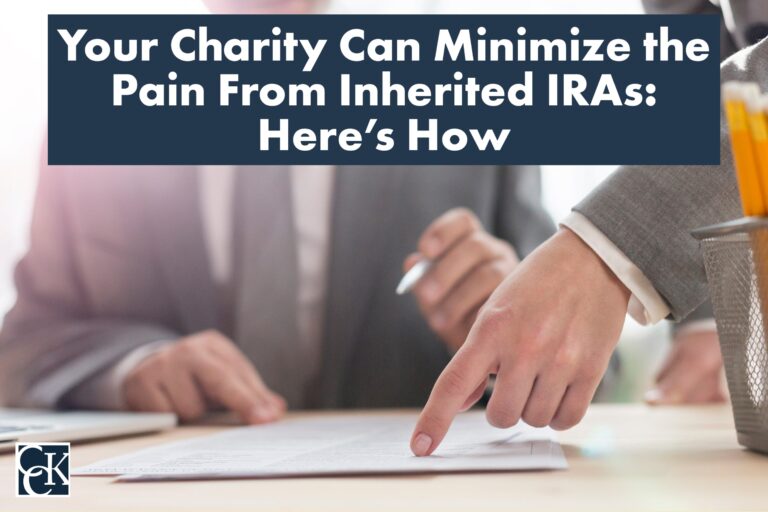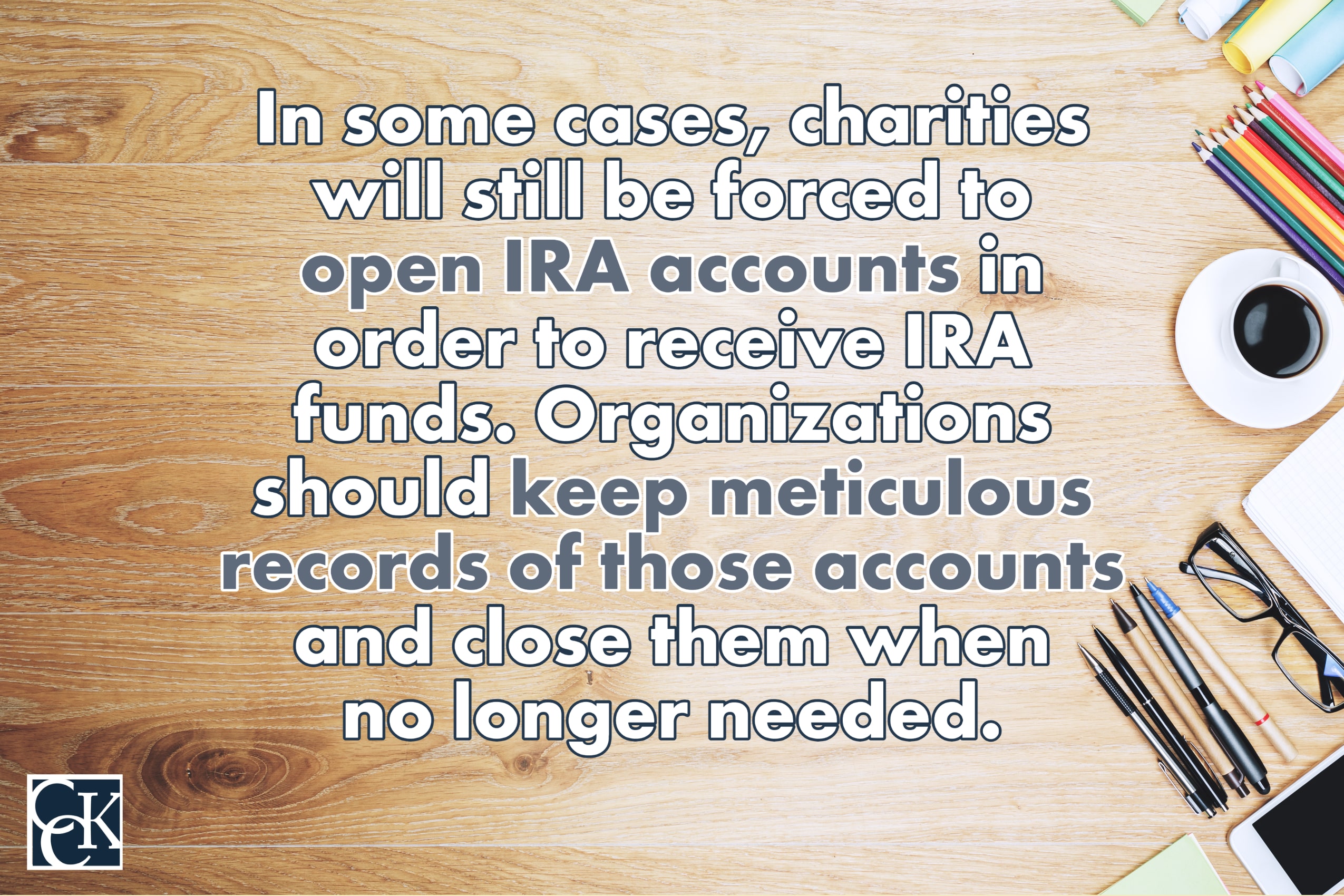Your Charity Can Minimize the Pain From Inherited IRAs: Here’s How

Gifts are always exciting, but some come with problems attached. That big noisy drum set for little Johnny . . . the non-housebroken puppy for his twin sister . . . an inherited Individual Retirement Account (IRA) for a charity.
Any charity would be grateful to be named beneficiary of an IRA. Almost any organization that has gotten such gifts has endured cases involving months, even years, of wrangling with a custodian to get the funds.
Here’s one of the best ever: One of our clients, a charity that is virtually a household name, recently inherited an IRA. The financial institution expressed concern that the organization – which raises tens of millions of dollars each year, has a huge presence on the web, had filed registrations and tax forms with the IRS and all the states as recently as a week before – might no longer be operating!
Our staff suggested that the financial institution could check official records showing active corporate status, confirm current standing with the IRS, etc. Not enough, we were told. “We will need to see an electric bill with the charity’s name and address before we can release the money.” Can you believe it? Is there any wonder that charities get frustrated with the seemingly simple task of receiving a generous bequest gift?
Frustrations of Inherited IRAs
Granted, that was an odd “ask.” But even the “normal” process frequently includes some or all of the following:
- Endless paperwork booby-trapped with unanswerable (but mandatory) questions;
- Phone calls with interminable “hold” periods, sometimes punctuated with a disconnection just as you reach queue position #1;
- Mandatory submission of personal data on officers or directors of the charity, even though those individuals won’t receive the money;
- Forced registration by the charity as a customer of the custodian institution and concurrent opening of an IRA in the name of the charity; and
- Having done all that, battling to get the funds from the new IRA account.
All too familiar? In our case, we’ve taken this burden from our bequest management clients. (Yes, we do include IRAs in our program.)
How to Accelerate and Simplify the Process
We’ve developed strategies and methods for accelerating and simplifying the process of liquidating these accounts. It’s not a secret recipe. We’re happy to share with our fellow members of the nonprofit community. Here are some tips:
- Have the arguments ready. There are legal arguments that can be made against requiring charities to open IRAs and/or provide personal information concerning executives. We tailor them to the situation and more and more often, we find that our approach is working. Two of the most effective arguments involve the following:
- The “Individual” Argument: Tax regulations limit ownership of an IRA to an “individual.” Requiring a charitable corporation to “open” such an account flies in the face of those rules.
- The Patriot Act Argument. Some financial institutions will rely on the Patriot Act to support a demand for personal data on charity executives. The Act contains no such provision.
CCK TIP: The legal arguments may have more impact if addressed to the General Counsel. With a little digging, one can usually identify that person.

- Go up the ladder. Oftentimes, the first contact at a financial institution is an operational employee who cannot change policies. In some cases – especially when a charity frequently receives IRAs from the same institution—it is worthwhile to go up the chain of command and find the decision-maker. CCK has sometimes been able to get policies waived and even changed for our client. Ultimately, that effort works to the benefit of the entire nonprofit community.
- Establish networks of contacts. As a charity finds sympathetic ears and reasonable minds within the nation’s financial institutions, it is prudent to cultivate those contacts. Straight thinkers will ultimately help the nonprofit community solve the inherited IRA problem, once and for all. In the short term, they are a godsend in helping charities to cut through the red tape.
- Keep records of open accounts. As it stands now, in some cases, charities will still be forced to open IRA accounts in order to receive IRA funds. Organizations should keep meticulous records of those accounts and close them when no longer needed. (One of the objections to provide personal information on executives is that the data is somehow incorporated into the record of the account. The longer the account stays open, the greater the risk of a data breach.)
CCK TIP: In some cases, it is useful to keep accounts open (for instance, at large custodial institutions with which a charity frequently deals). The same account can be used over and over again, without having to go through the agony of account creation each and every time.
A charity that handles its own beneficiary accounts can certainly try some of the above tactics. On the National Association of Charitable Gift Planners website, there’s a fine resource with sample letters from the RIFT Project.